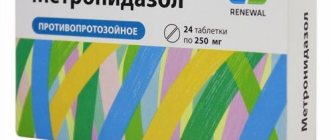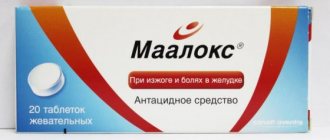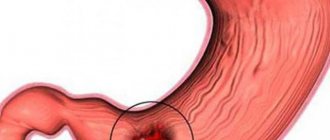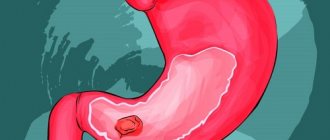Injections description types
If you use injections for treatment, the drug enters directly into the circulatory system of the body and affects certain organs and systems of the body. The effect on the gastrointestinal tract, in this case, is reduced to a minimum. The range of diseases for which the use of injection is recommended is very wide.
If you use injections for treatment, the drug enters directly into the circulatory system of the body and affects certain organs and systems of the body
These are diseases of the joints (arthritis, arthrosis), inflammation of the kidneys (nephritis), liver damage (hepatitis, cirrhosis, hepatosis), cardiovascular abnormalities (hypertension, ischemia, atherosclerosis). h), pathology of the spine (osteoxondrosis), disorders of the gastrointestinal tract ( gastritis, pancreatitis, peptic ulcer), relief of pain syndrome (local and general anesthesia - strong painkillers are used), allergic reaction of the body.
The simplest types of injections can be carried out independently, for example intramuscular. More complex manipulations should be performed by medical professionals with appropriate education and experience (for example, injections for back pain, allergies or injections in the knee joint). In this case, it is necessary to follow certain rules for conducting procedures.
What types of injections are there:
- intravenous: the most common type of injection, in which the medicine is injected directly into the blood;
- intramuscular: a very popular method of administering medications. With this type of injection, muscle tissue is involved;
- subcutaneous: this procedure is a little more complicated. Requires certain skills and concentration. The needle is inserted into the subcutaneous layer, rich in thin blood vessels;
- intradermal: do not expect widespread distribution of the drug through the blood. Used for diagnostics or local anesthesia;
- intraosseous: a rather complex type of injection. It is used in special cases when anesthesia is needed or the patient has a high degree of obesity. Only qualified medical personnel are involved;
- Intraterial: the most rare procedure. Difficult to perform, can lead to serious complications. Carried out during resuscitation.
Do they give injections for gastritis?
Pain with gastritis appears due to the aggressive effect of gastric juice on the inflamed parts of the mucous membrane or as a result of spasms. Taking medications in tablets can further increase irritation of gastric tissues, therefore, in the acute form of the disease, droppers and injections are often prescribed.
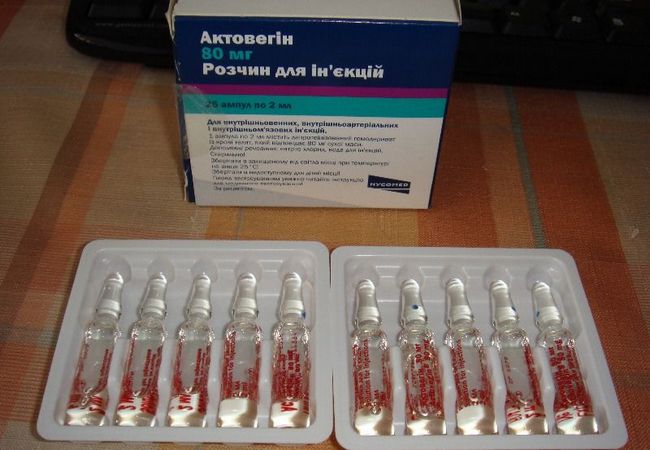
Taking medications in tablets can further increase irritation of gastric tissues; therefore, in acute forms of the disease, droppers and injections are often prescribed
For unbearable pain due to gastritis, injections of antispasmodics and painkillers are used. These can be No-Shpa, Cerucal, Atropine and other potent drugs.
In the chronic course of the disease, usually in winter or spring, when the body is most weakened, it is recommended to carry out 3-4 week courses of vitamin therapy. To accelerate the healing process of the mucous membrane, drugs are used that increase microcirculation in the tissues of the stomach and have a restorative effect. These include B vitamins, Solcoseryl and aloe extract, prescribed as injections.
It is known that with atrophic gastritis, gastric motility often decreases. Intramuscular administration of solcoseryl for 20 days improves the passage of food through the stomach.
In case of gastritis accompanied by acute heart failure, gastric lavage cannot be done. In this case, injections are prescribed to relieve spasms and pain (Analgin, Baralgin, Spazmalgon). For acute vascular problems, analeptics (caffeine, cordiamine) are used. Treatment of gastritis with injections and droppers must be carried out in a hospital setting.
How to diagnose a stomach ulcer?
The main method for diagnosing gastric ulcers is gastroscopy. Most often, fibrogastroduodenoscopy is performed - an endoscopic examination during which the stomach and duodenum are examined. If during the examination the doctor finds a suspiciously changed area of the mucous membrane, he will perform a biopsy - obtain a fragment of tissue and send it to the laboratory.
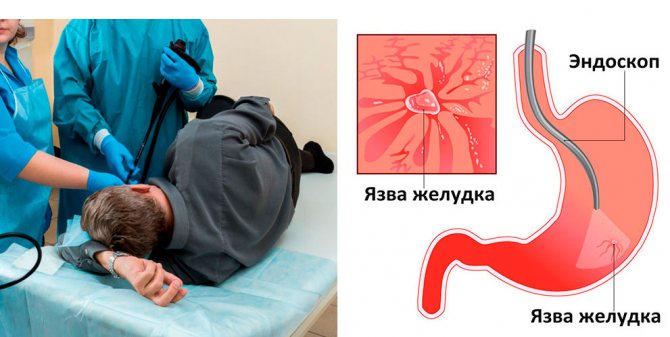
The doctor may order an X-ray contrast test. You will be given a radiopaque solution to drink, after which the stomach will be examined with X-rays: the doctor will be able to observe on the screen how it contracts and detect deformations of its walls.
Blood tests, stool tests, and breath tests help identify the pathogen Helicobacter Pylori. A complete blood count and stool occult blood test are needed to diagnose bleeding and anemia.
What is more effective: antibiotics in tablets or injections for gastritis
Antibiotics are intended to treat chronic gastritis caused by Helicobacter pylori. This bacterium fights extremely stubbornly for its life and does not respond to a single antibiotic - only to a combination. Antibiotics that are effective against H. pylori are clarithromycin, amoxicillin, metronidazole, tetracycline, furazolidone. If you treat an infection with one antibiotic, the recovery rate is much lower. The course of treatment is from one to two weeks.
That antibiotics in tablets or injections are more effective for gastritis - such fears made sense twenty years ago - then it was really more effective to use antibiotics in injections for a quick effect on the body during treatment. Today the question has lost its relevance - moreover, some tablets have a much faster and better effect on harmful bacteria than injections.
Oral administration of drugs for gastritis is always preferable: it is safer because the skin is not broken, as with injection under the skin - the wound still remains along with the risk of infection if improper care is taken. It is more convenient to take tablets or syrups - especially when it comes to small children. Finally, the injection is painful and unpleasant.
This is not true for all antibiotics - some of them can still only be administered subcutaneously or intramuscularly because stomach enzymes destroy the active ingredients.
Is the armor strong?
An ulcer is an open wound on the gastric mucosa, and serious reasons are needed for its appearance. Since the stomach is constantly in contact with an aggressive environment - gastric juice, nature has provided an effective mechanism to protect it. The mucous membrane of the stomach is covered with a dense biofilm consisting of microorganisms living in it. Biofilm reliably protects against low-quality food and potentially harmful agents. Sometimes this protection fails.
Questions and Answers Is it possible to get re-infected with Helicobacter pylori?
Painkiller injections for gastritis
It is very difficult, sometimes simply impossible, to determine the cause from one symptom. Mistakes often occur during diagnosis and incorrect treatment is prescribed. That is why the doctor prescribes a comprehensive examination upon treatment. Only a doctor can determine the true cause and prescribe correct and effective treatment.
It must be remembered that relieving pain does not mean removing the cause that caused the pain. There are pharmacological groups that include drugs that will help cope with unpleasant sensations. Any drug should be prescribed only by the attending physician. The drug for pain with gastritis can be either in tablets or in injections. Self-medication is contraindicated.
Prokinetics and antifoaming agents for gastritis are agents that accelerate the elimination of gases formed in the intestines and/or help suppress gas formation in various disorders of the kinetics and motility of the gastrointestinal tract. Fighting flatulence. Typical prokinetics include Cerucal, Motilium, Coordinax. Espumisan, Dimethicone, Disflatil and other drugs of this group are used as defoamers.
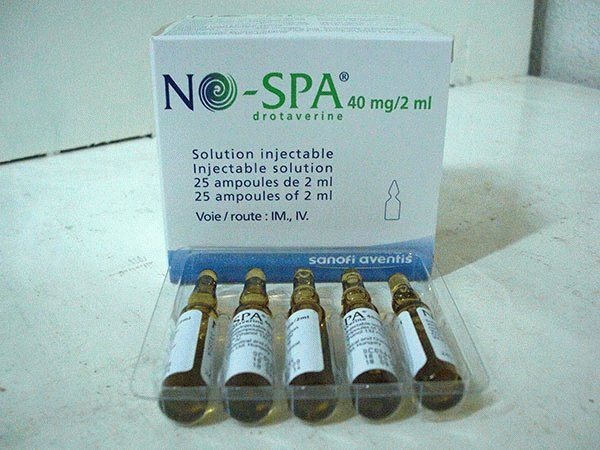
The drug for pain with gastritis can be either in tablets or in injections
Enterosorbents for pain in gastritis - enterosorbents are drugs that remove harmful compounds, allergens, toxins and other foreign elements from the body, which serve as the beginning of the development of painful processes in the body. These include Smecta, Activated Carbon, Polysorb.
Absorbed and non-absorbed atacid drugs for pain in gastritis - the first include Calcium Carbonate, Reni, Soda. These medications have unpleasant side effects, so gastroenterologists do not recommend them. The second group of drugs serves to long-term reduce the level of acidity in the stomach, these include Almagel, Gastal, Maalox, the analgesic effect of which is slightly delayed, but there are no side effects when using the drugs.
Antispasmodics drugs in injections for pain with gastritis
This group of drugs affects the smooth muscles of the stomach, reducing its tone and relieving spasms, which leads to a reduction in pain in functional gastric dyspepsia. They are produced mainly in the form of tablets, but there are also ampoules for intramuscular administration.
The main drugs in this group:
- drotaverine (“No-Shpa”);
- papaverine;
- gioscin;
- mebevirin;
- exoter bromide ("dissenter");
- bromide bromide (“Spazomen”).
Will we get treatment?
Diagnosing an ulcer is not difficult. An experienced doctor will make a diagnosis based on examination and history, but to confirm the diagnosis you will need gastroscopy - an unpleasant procedure, but quick and informative.
To treat peptic ulcers, patients are prescribed several types of antibiotics and antacids - drugs that neutralize hydrochloric acid and form a protective film on the stomach wall. The course of treatment takes two weeks. In this case, relief occurs after 3–5 days; it takes about a month and a half for the ulcer to heal. All this time, the patient must adhere to diet No. 1, which excludes any irritants (chemical and thermal) and stimulants of gastric juice secretion (hot, spicy, fatty foods). The diet also requires eating food at a temperature that is comfortable for the stomach – 40–50 degrees, 5–6 times a day. It is difficult to stay hungry on such a diet. You can eat porridge, mashed potatoes, vermicelli, boiled and stewed meat and vegetables. You will have to give up strong tea and coffee. From smoking and alcohol - even more so.
Article on the topic
How to eat deliciously when you have a stomach ulcer. Menu for dietary table No. 1
The most effective drugs for injection for gastritis and ulcers
A disease such as gastritis is rightfully considered the scourge of the present time. Everyone is susceptible to it, from young to old. This disease is expressed by inflammation of the gastric mucosa; with timely initiation of therapy, it can be completely cured.
If therapy is not started on time, the next stage will be an ulcer, which cannot be completely cured. There are many drugs for therapy: both traditional and official medicine. Also, it should be remembered that a disease that is not cured in time can become the root cause of the development of cancer of the digestive system.
To relieve spasms, the antispasmodic no-shpu is successfully used. It is administered intramuscularly in a dose of 50-250 mg. For attacks of acute pain - 40-80 mg intravenously. during a strong spasm of the smooth muscles of the stomach. Papaverine is a drug aimed at reducing spasms and relaxing the smooth muscles of the gastrointestinal tract. Injections for ulcers and gastritis are administered intramuscularly and intravenously.
Sodium oxyferriscorbone is a medicine for intramuscular administration. Has an analgesic and anti-inflammatory effect. Available in powder form in an ampoule with a capacity of 0.03 grams. Reduce the concentration of Oxyferriscorbone before administration using sodium chloride solution. The medication is perfectly used in tandem with novocaine or atropine sulfate. Mixing it with other medications is contraindicated.
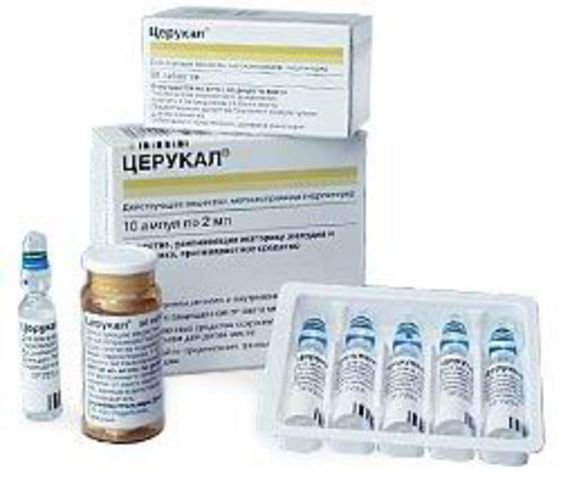
For the treatment of gastritis, there are many drugs, both traditional and official medicine.
Atropine. This injectable medication belongs to a group of drugs that block nerve stimulation. It is used for peptic ulcers and gastritis of the digestive organs in the acute stage to relieve pain.
The main purpose of injections such as quamatel and ranitidine is to reduce the production of hydrochloric acid. Recommended for frequent attacks of illness with pronounced acute pain. Cerucal (Metoclopramide) is a medication that is used for intense vomiting. Cerucal has a positive effect on peristalsis and also increases the tone of the stomach muscles.
Diet for treating ulcers
In addition to taking medications for stomach ulcers, proper nutrition is of great importance. The diet should include foods that provide the body with all the necessary nutrients and, at the same time, are not capable of damaging the gastric mucosa. For this purpose, all dishes are served in crushed or liquid form. Soups with semolina, rice or oatmeal, pureed porridge, cottage cheese, omelet, vegetable puree, and lean meat are recommended. Fried, salted, smoked foods, as well as alcohol, canned food, coffee, and strong tea should be excluded. A healthy diet also helps prevent stomach ulcers.

